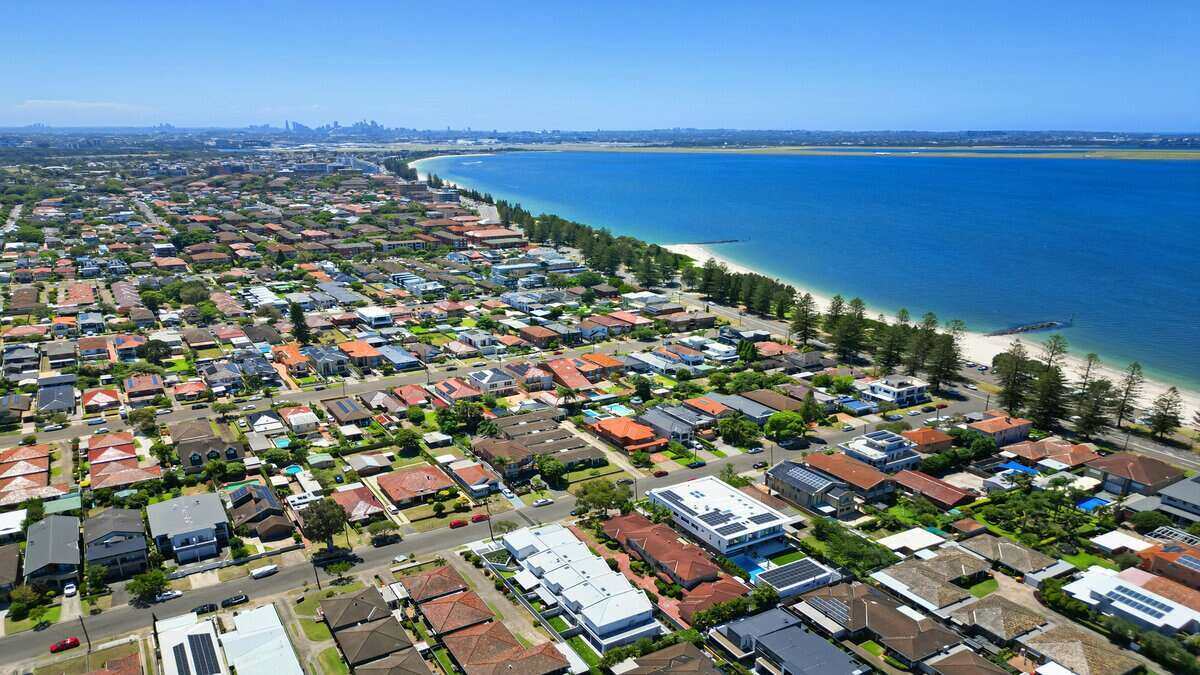The anticipated mortgage cliff, when a raft of homeowners were to face financial disaster coming off fixed rate loans, was forecast to bring calamity to the Australian economy.
Around 880,000 Australian mortgages came off fixed rates in 2023 with another 450,000 due by the end of 2024, according to Reserve Bank of Australia data.
At the peak – precipice? - of rollovers last year, there was a flurry of refinancing activity on the home loan market.
Home loan refinancing jumped around 14% in the 2022-23 financial year, with the big banks jostling with the rest of the market to win mortgage customers from their rivals.
The big four were among more than 30 lenders who touted cashback offers as refinancing rates raced to the bottom.
Indeed, some lenders are still offering cashback deals to lure new and refinancing borrowers.
More than 450,000 homeowners refinanced their mortgages in the last financial year, the majority signing up with a major bank.
But fixed rate loans have been continuing to expire ever since with many analysts marking April 2024 as when the ‘mortgage cliff’ is officially over.
It begs the question: did it ever really begin?
What does the data say?
The latest RBA data shows less than 1% of home loans are in 90-day arrears, a figure which is actually lower than before the pandemic.
In its latest Financial Stability Review released in late March, the RBA said lenders have a small but rising number of borrowers on temporary hardship arrangements, but the numbers remain low on a historical basis.
The RBA reported the borrowers rolling off fixed rates are managing their mortgage repayments just as well as other borrowers.
“This resilience partly reflects these borrowers were able to build up savings buffers over a longer period of unusually low interest rates,” the RBA review said.
The review found many households have made adjustments to continue servicing their debts including reducing their discretionary spending, increasing their hours of work in a strong labour market, while some have drawn down on savings buffers.
Home market continues to boom
Those who were waiting for mortgage cliff hardship to flood the market with lower-cost, quick sale homes may well be rethinking their plan.
Housing prices nationally continued to soar during the mortgage cliff period and now at the end of the fixed rate rollover era, home values remain at record levels.
Indeed, the Australian housing market has defied the old model of high interest rates depressing home prices, thanks largely to record immigration, low housing supply, and a worrying lack of new home approvals.
The RBA may not have been expecting interest rate rises would have so little effect on home values.
The banking industry makes it all about them
Australia’s most prominent bankers are suggesting the lack of stress in the financial system is a sign of the over-regulation of Australia’s banking sector.
Australian Banking Association CEO Anna Bligh told a banking summit that 12 months ago, amid widespread fear of the mortgage cliff, no banks would have expected their lending books to be as “strong and resilient” as they are now.
She attributed this partly to changes in lending practice and quality but asked the question whether “enough risk” was being taken and whether enough people were being given the opportunity to borrow through banks.
Digs at banking regulation were an underlying theme of the summit, suggesting the major banks would have quite liked the opportunity for borrowers to court the cliff with them rather than have to turn to alternative lenders.
Departing NAB boss laments regulatory restrictions
Speaking at his last public appearance as National Australia Bank’s CEO, Ross McEwan also questioned whether banks should have been taking more risks with their lending during the period.
Mr McEwan said responsible lending regulations, largely introduced after the GFC, were making it more difficult for borrowers to get loans with major lenders, adding he was “very surprised at how little stress there is in the [banking] system”.
“Has the pendulum moved a little bit too far, that was should have been taking a bit more risk? Are customers missing out at the end of the day?” he asked.
Mr McEwan said he recently noted a payday lender had reported its borrowers had risen 30% and he was concerned regulation was driving people to more expensive and riskier lenders.
“My fear as I look back is: are we pushing too many people outside [banking]?” he said.
Is there another cliff we aren’t seeing?
Indeed, loan delinquencies have risen at a higher rate in the non-banking sector but hardly to catastrophic levels.
Coolabah Capital Investments tracks delinquencies on all securitised home loans issued in both the bank and non-bank sectors.
Its latest data has the 30-day delinquency rate on non-conforming or sub-prime loans up from 2.5% to around 4% during over the past 18 months, the mortgage cliff danger period.
Over the same time, the 30-day arrears rate for higher quality “prime” loans written by non-banks more than doubled from around 0.7% to 1.6%.
Banks inched up from 0.7% to around 1%, in line with RBA figures.
No cliff to see here it seems.
Why wasn’t there a mortgage cliff?
One theory as to why Australia didn’t see mass defaults was that the recent crop of fixed rate loans weren’t as risky as they used to be.
Historically, fixed rate borrowers in Australia were considered riskier than variable borrowers but during the pandemic, many homeowners took advantage of signing up or locking in to record low interest rates.
Fixed rate loans peaked in July 2021 when they made up 46% of home loans, by value, written that month, according to ABS data.
Many borrowers who locked into fixed rates during the pandemic did so inside their existing variable loans.
Some who fixed part of their mortgage were able to continue making extra payments on the variable part of their loans, getting ahead on the loan repayments.
So where to now?
In its latest quarterly review, released in March 2024, the Council of Financial Regulators said risks to the Australian financial system from household lending “remain contained” although noted hardship applications had risen “materially” in the past year.
It also noted the risk to household balance sheets now hangs on the outlook for inflation and unemployment.
Thus far, a strong labour market has helped borrowers stay in work, switch to higher paying jobs, or take on extra employment to meet increased mortgage repayments.
If the unemployment rate jumps from its current annual rate of 3.7% to a forecast 4.5% by the end of 2024, it may well squeeze some household budgets.
As well, the RBA has made clear interest rate relief will only come when it’s satisfied inflation will remain in its target range of 2-3%.
The latest official inflation data, released last week, puts monthly CPI inflation at 3.4% for the 12 months to February, the same as the previous month.
At this stage, the big four banks are still expecting interest rates to fall by the second half of the year, as early as September, meaning the ground at the bottom of the cliff drop zone may well rise again.
Yes, the mortgage cliff may have been a little dramatic, but the gentler downhill gradient is not quite finished yet.
Image by Leio McLaren on Unsplash

Ready, Set, Buy!
Learn everything you need to know about buying property – from choosing the right property and home loan, to the purchasing process, tips to save money and more!
With bonus Q&A sheet and Crossword!



 Harry O'Sullivan
Harry O'Sullivan
 Harrison Astbury
Harrison Astbury
 Denise Raward
Denise Raward